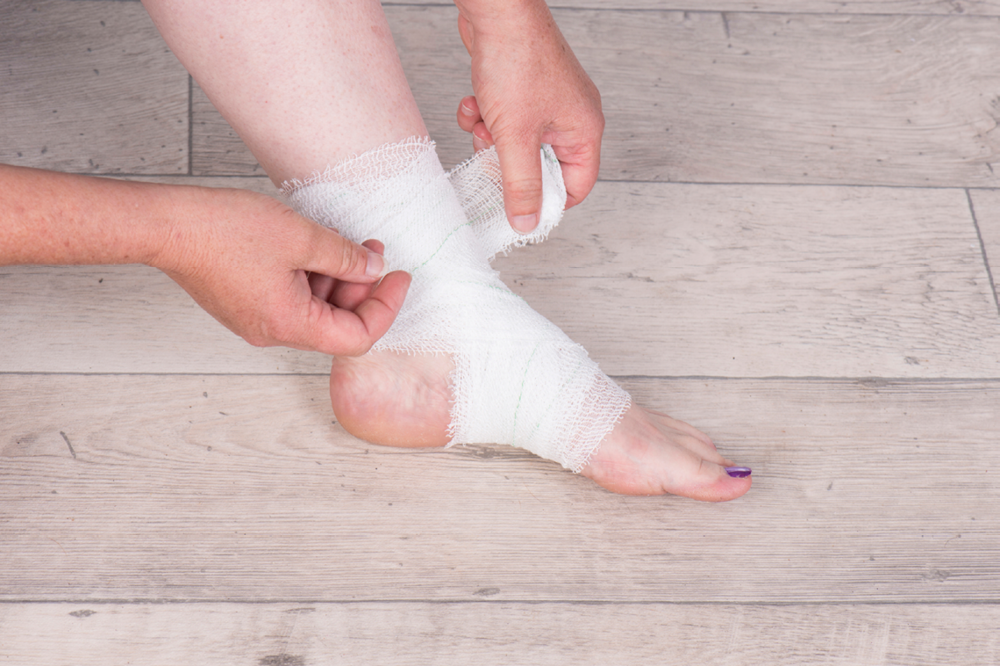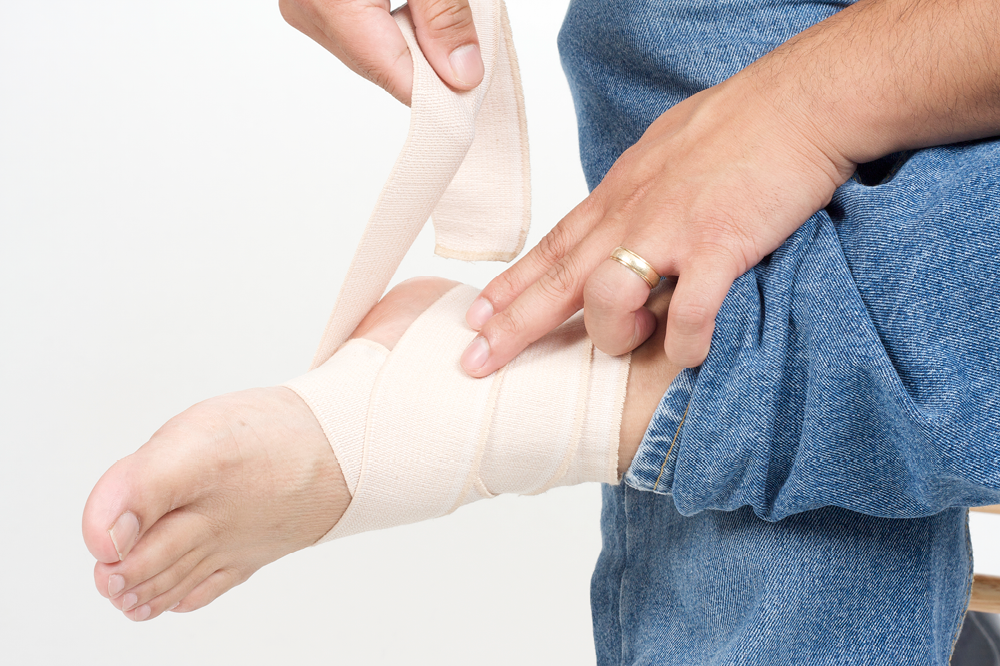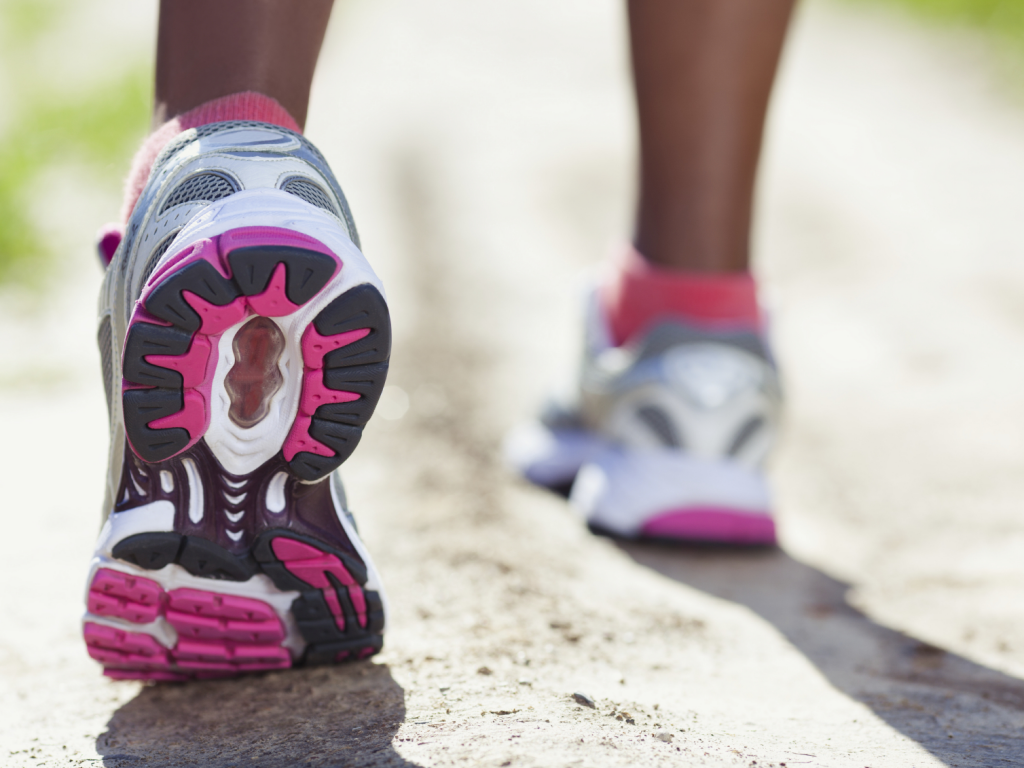Nothing can knock you off your feet faster than a sprained ankle, a common injury that happens when one or more of the ligaments on the outer side of your ankle is suddenly torn or stretched too far. And yet it’s one of the most frequently occurring injuries for athletes and non-athletes alike: about 25,000 sprained ankles land people on the sidelines or in hospitals every day. Fortunately, there are several steps you can take to prevent ankle sprains and swelling from taking you out of the game and/or out of regular life.
1. Improve Your Balance
Whether you’re an athlete or not, ankle sprains and injuries typically happen when you lose your balance. It could be from an uneven sidewalk, an untied shoelace that you trip over or a sudden leg movement in an attempt to kick the ball during the game. Whatever the case may be, when the ankle rolls inward and stretches or tears ligaments (inversion sprain) or the ankle rolls outward and stretches and tears ligaments (eversion sprain), it creates pain and swelling — sometimes a little, more often a lot.

One of the simplest ways to prevent a sprained ankle is to improve your balance so that when unexpected situations throw your feet and legs off guard, you can quickly and inherently counteract to avoid a problem. The best way to do this is to engage in activities that improve your proprioception, or the sense of knowing where your body parts are in space.
Try standing on one leg while doing menial activities like brushing your teeth and washing dishes. Once you start feeling confident doing that, try adding a pillow underneath to further test your stability. Most ankle sprains happen when the foot is in the very vulnerable plantar flexion position (with your toes on the ground and your heel up in the air), so try balancing in this position, as well.
2. Strengthen Your Ankle Muscles
Another effective way to prevent a sprained ankle is to frequently engage in simple exercises that strengthen your leg, ankle, ligaments and foot muscles. A common ankle strengthening exercise is to sit in a chair that allows your legs to dangle and draw out the entire alphabet with the tip of your toe, trying not to move your leg in the process. This works every muscle in your ankle area.
RELATED: Fat Blasting Foot Exercises That Reduce Back Pain
Another exercise you can try is to sit in a chair and put a towel flat on the floor in front of you. Keep your heel firmly on the ground and use your toes to “lift” the towel off the floor. Continue gathering the towel and letting it go for 10 repetitions on each foot.
When done on a regular basis, fitness activities like the exercises above can help improve balance, strengthen muscles and improve proprioception — all of which can significantly reduce your chance of future ankle sprains and injuries.
3. Choose Correct Footwear
Ankle sprains account for about 25% of all sports-related injuries, and while there are several factors that contribute to an ankle being injured, choosing incorrect shoes is a big one. Be sure to wear comfortable footwear made specifically for the activity you’re engaging in and make sure you properly measure your feet before purchasing shoes rather than going on assumed size alone.

Choosing whether or not to wear high-top sneakers versus low-cut sneakers has been an ongoing debate in the sports world when it comes to avoiding sprained ankles. It is generally advised that if you’re engaging in a sport with lots of cutting and back-and-forth action (basketball, volleyball, etc.), high-top shoes work best for protecting the ligaments in the foot and ankles. However, it is up to each individual to assess what is most comfortable for them.
4. Consider Taping or Bracing Your Ankle Before Physical Activity
Athletes have been taping or bracing their ankles for years, though there is some controversy over whether or not the practice actually helps prevent ankle sprains and injuries. Some say the tape loosens shortly after activity begins, so if that is a concern, perhaps choosing a specifically made lace-up ankle brace is better. Taping and bracing can be very effective for people who have sustained injuries in the past or who have weakened ankles due to past sprains or a decrease in ankle strengthening physical activity.
5. Engage In Adequate Preparation Before Activity
We’re not all Superman, and therefore should be realistic about our fitness levels and sports capabilities. Suddenly engaging in physical activity after periods of not being active greatly increases your chance of becoming injured, so try not to run a marathon without first taking a few spins around the block. Be patient. Each muscle and tendon needs time to develop and prepare for the physical challenges you’ll be demanding of them, and it’s better to start training in advance rather than face weeks — or possibly even years — of physical therapy or rehabilitation for an injury afterward.
Want to know which symptoms of an ankle sprain to look out for? Check out this article on the symptoms and treatment of sprains.


